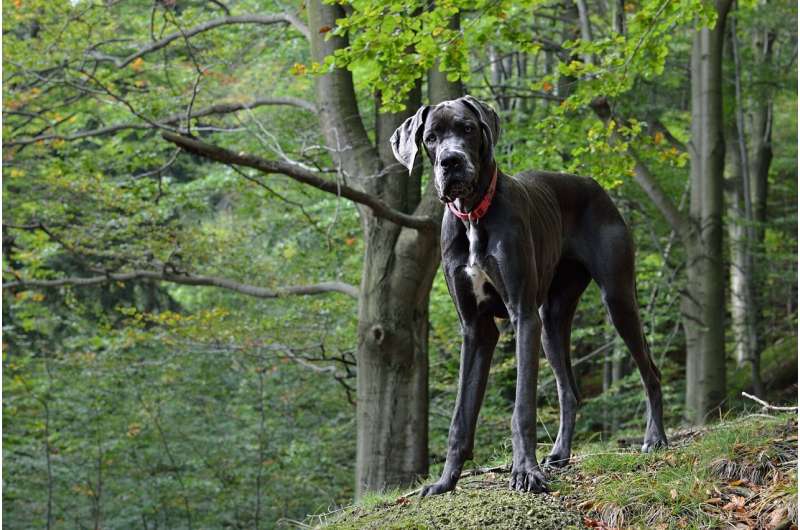This article has been reviewed according to Science X's editorial process and policies. Editors have highlighted the following attributes while ensuring the content's credibility:
fact-checked
peer-reviewed publication
trusted source
proofread
Searching for the missing link between growth and longevity

Many scientists believe that in mammals, there's a tradeoff between growth and better health. Pugs, for example, are known to live longer than their larger counterpart in the dog world, the Great Dane. But a new study shows that when more energy is allocated to the creation of better cellular materials, longevity is enhanced.
Dr. Chen Hou, an associate professor of biological sciences at Missouri University of Science and Technology, published a paper titled "Energetic cost of biosynthesis is a missing link between growth and longevity in mammals" in the Proceedings of the National Academy of Sciences.
Hou says that his "take-home message" from his research is that if you allocate more energy to making improved cellular materials, you will live longer—a concept that he says engineers may be more familiar with than biologists.
"The existing life history theories suggested a tradeoff between growth and somatic maintenance, meaning more energy spent on growth would result in less for maintaining health," says Hou. "But this study reveals that the energy cost for biosynthesis is a hidden physiological mechanism underlying the well-established negative correlation between growth and lifespan in mammalian species."
Hou's study uses a new research model based on energy conservation to explain the physiological effect of the variation in the energetic cost on the aging process. It also illustrates its role in linking growth and lifespan.
"Previously, the energetic cost of biosynthesis has been thought to be a constant across species and therefore was not considered a contributor to the variation in any life history traits, such as growth and lifespan," says Hou.
"This study employs a recently proposed model based on energy conservation to explain the physiological effect of the variation in this energetic cost on the aging process and illustrates its role in linking growth and lifespan."
The study shows that after controlling two energy components—mass-specific metabolic rate and the energetic cost of biosynthesis—there is still a negative correlation between growth constant and lifespan, revealing that the energetic cost of biosynthesis is a link between growth and longevity in mammals.
Hou says that since the energy cost of biosynthesis links growth to aging processes, allocating more energy to growth may enhance somatic maintenance.
He believes the conventional understanding of the tradeoff between growth and maintenance needs to be more carefully analyzed, and that the potential combined effect of metabolic rate and energetic cost of biosynthesis should be considered in similar studies of aging.
More information: Chen Hou, Energetic cost of biosynthesis is a missing link between growth and longevity in mammals, Proceedings of the National Academy of Sciences (2024). DOI: 10.1073/pnas.2315921121
Journal information: Proceedings of the National Academy of Sciences
Provided by Missouri University of Science and Technology




















